Introduction — The Crorepati Dream: Index or Active?
Everyone dreams of joining India’s “Crorepati Club.” But the big question investors face in 2025 is — Which route is better to achieve ₹1 crore by 2026 (or within the next decade): Index Funds or Active Funds?
Table of Contents
Both have passionate supporters. Index funds promise simplicity and cost efficiency. Active funds claim to deliver higher returns through smart management. The right choice depends on your risk tolerance, discipline, and long-term financial vision.
This in-depth guide will break down how both strategies perform, what data says, how you can model your ₹1 crore target, and which combination can help you reach your Crorepati goal by 2026 — or steadily by 2035.
The Rise of Passive Investing in India (2025 Outlook)
The Indian mutual fund landscape has changed dramatically. With rising market participation, investors are becoming more educated and cost-conscious. Passive investing through Index Funds and ETFs is seeing explosive growth. According to AMFI data (FY2025):
- Equity mutual fund AUM has crossed ₹30 lakh crore, up 24% year-on-year.
- SIP inflows hit ₹21,000 crore per month, the highest ever.
- Passive funds grew 56% YoY, led by Nifty and Sensex index trackers.
Table 1 — Mutual Fund Industry Snapshot (FY2025)
| Category | Total AUM (₹ Crore) | YoY Growth (%) |
|---|---|---|
| Active Equity Funds | 19,80,000 | 18% |
| Index Funds/ETFs | 6,50,000 | 56% |
| Debt & Hybrid Funds | 12,10,000 | 10% |
The data shows India’s investment behavior shifting — not away from active funds, but toward low-cost core holdings that deliver consistent returns.
Understanding Index Funds vs Active Funds
Before deciding which helps you reach ₹1 crore faster, let’s understand the difference:
- Index Funds replicate benchmark indices like Nifty 50, Sensex, or Nifty Next 50. They have low expense ratios and aim to mirror market returns.
- Active Funds are managed by professionals who select stocks to outperform benchmarks.
Key Distinction:
- Index = Market average returns, low cost
- Active = Potential outperformance, higher cost
Table 2 — Comparison Overview
| Feature | Index Funds | Active Funds |
|---|---|---|
| Expense Ratio | 0.05–0.5% | 1.0–2.5% |
| Goal | Match Index | Beat Index |
| Risk | Moderate | Higher (Manager-Dependent) |
| Tax Efficiency | High | Moderate |
| Transparency | Full | Variable |
In simple terms — Index funds let you own the market. Active funds make a bet on specific stocks. Both can lead you to ₹1 crore — the path and risk differ.

The SPIVA Reality: How Often Do Active Funds Win?
According to the SPIVA India 2025 report, over 83% of large-cap active funds underperformed the Nifty 50 TRI over a 5-year period. However, active funds in mid-cap and small-cap categories performed better.
The message? Active management shines in areas where markets are less efficient, while index funds dominate in large-caps.
Table 3 — SPIVA India 2025 Highlights
| Category | % Active Funds Underperforming Benchmark |
|---|---|
| Large Cap | 83% |
| Mid Cap | 56% |
| Small Cap | 41% |
| ELSS (Tax Saving) | 68% |
Expert Insight:
“Investors often chase last year’s top-performing active funds, only to find they lag later. Index investing provides consistency and discipline — the two cornerstones of wealth creation.”
— Raghav Sharma, CFA, Chief Investment Analyst, Mumbai
The Mathematics of Becoming a Crorepati
Let’s explore what it takes to become a Crorepati using SIPs through index or active funds. Assume you start in 2025.
Table 4 — SIP Projection (Target ₹1 Crore)
| Time Horizon | Monthly SIP Needed @12% (Active) | Monthly SIP Needed @10% (Index) |
|---|---|---|
| 5 Years | ₹1,00,000 | ₹1,20,000 |
| 7 Years | ₹65,000 | ₹78,000 |
| 10 Years | ₹38,500 | ₹46,000 |
As the table shows, longer horizons reduce pressure on SIP amounts. Index investors need slightly more time or higher SIPs to match active fund returns.
Futuristic Projections (2025–2035)
Let’s model realistic outcomes for investors starting SIPs in January 2026.
Table 5 — 10-Year Projection: ₹20,000 Monthly SIP (2026–2035)
| Fund Type | Expected CAGR | Corpus by 2035 (₹) |
|---|---|---|
| Index (Nifty 50 TRI) | 11% | 41.3 lakh |
| Balanced (Index + Active Mix) | 13% | 47.5 lakh |
| Aggressive Active (Mid & Small Cap) | 16% | 55.2 lakh |
A balanced mix of Index + Active can deliver the best risk-adjusted return. The core should remain index-based (for stability), while selective active funds can amplify growth.
Why Index Funds Are Gaining Ground
- Low Costs: Every 1% saved in expense ratio compounds into massive savings over 10 years.
- Transparency: You always know what you’re buying.
- Ease of Use: No need to track fund manager changes or style drift.
- Market Efficiency: In large-caps, beating benchmarks consistently is statistically rare.
Table 6 — Cost Comparison: Impact of Fees Over 10 Years (₹10 Lakh Invested)
| Expense Ratio | Final Value (₹) @12% CAGR | Difference |
|---|---|---|
| 0.3% (Index) | 31.1 lakh | — |
| 2% (Active) | 27.0 lakh | 4.1 lakh loss due to fees |
Even a 1.7% higher fee reduces your corpus by over ₹4 lakh in 10 years. That’s why low-cost compounding matters.
Where Active Funds Still Win
While index funds are efficient, active funds can still shine in:
- Mid-cap & Small-cap segments (inefficiently priced stocks)
- Sectoral/Thematic themes (renewable energy, EV, defense, digital tech)
- Dynamic asset allocation during volatile markets
Table 7 — Active Categories Worth Exploring (2025–2035)
| Category | Target CAGR Range | Key Advantage |
|---|---|---|
| Mid Cap | 13–17% | Capture India’s growth engines |
| Small Cap | 15–20% | Early-stage value discovery |
| Hybrid/Dynamic | 10–12% | Smoother ride in volatile markets |
Expert View:
“Index funds form your foundation. But active funds with proven managers can add a performance kicker, especially in mid-cap and small-cap spaces.”
— Meenakshi Iyer, SEBI Registered Investment Advisor
How to Mix Index and Active Funds
A diversified, goal-based approach works best. Here’s a framework for different investor profiles:
Table 8 — Recommended Allocation (for ₹1 Crore Goal)
| Investor Type | Horizon | Index (%) | Active (%) |
|---|---|---|---|
| Conservative | 10–12 yrs | 80 | 20 |
| Moderate | 8–10 yrs | 60 | 40 |
| Aggressive | 6–8 yrs | 40 | 60 |
This balance ensures low-cost compounding with selective alpha exposure.
Behavioral Edge: Why Consistency Beats Timing
Most investors fail not because of poor funds but because of inconsistent investing. SIP discipline, not market timing, is the true key to becoming a crorepati.
Also Read: Top 7 Index Funds With Up to 43% SIP Return in Just 1 Year
Example: An investor who continues SIPs even during market dips earns 12–14% CAGR, while one who stops during volatility rarely crosses 9–10% CAGR.
Table 9 — SIP Continuity Impact (2025–2035)
| Investor Behavior | CAGR | Corpus @₹20,000 SIP |
|---|---|---|
| Regular SIP (No Pause) | 12% | ₹47.5 lakh |
| SIP Paused 1 Year (Bear Market) | 10% | ₹42.0 lakh |
| SIP Stopped 2 Years Early | 8% | ₹38.5 lakh |
Lesson: Time in the market beats timing the market.
Taxation and Efficiency (2025 Laws)
Both active and index equity funds are taxed the same under LTCG and STCG. However, index funds usually have lower turnover, leading to less frequent tax events.
- LTCG (Holding > 12 months): 10% on gains exceeding ₹1 lakh per year.
- STCG (Holding < 12 months): 15% flat.
Table 10 — Tax Impact Example (₹10 Lakh Gain)
| Holding Type | Tax Rate | Tax Payable (₹) | Net Return |
|---|---|---|---|
| Index Fund | 10% | ₹1,00,000 | ₹9,00,000 |
| Active Fund (higher churn) | 15% | ₹1,50,000 | ₹8,50,000 |
Step-by-Step Action Plan for Your Crorepati Goal
- Set Your Target: Define ₹1 crore or higher goals with a timeline (5, 10, or 15 years).
- Start SIPs Now: Even ₹10,000/month compounds powerfully over 10 years.
- Select Funds: Use low-cost Nifty 50/Nifty Next 50 index funds as your base.
- Add Alpha: Add 1–2 active funds in small/mid-cap or thematic segments.
- Review Annually: Don’t switch based on 1-year performance.
- Stay Invested: Markets reward patience, not panic.
“For 90% of investors, index funds are enough. The key is consistency, not prediction.” — Rahul Sood, CFP®
“The future of investing in India is hybrid — low-cost passive core, active satellite exposure.” — Kavita Krishnan, Fund Research Analyst
Conclusion — The Smart Way to ₹1 Crore
To achieve your Crorepati goal by 2026 or 2035, remember:
- Start Early, Stay Consistent: SIP automation builds wealth silently.
- Keep Costs Low: Index funds give compounding a head start.
- Mix Smartly: Blend index (stability) and active (growth).
- Be Patient: Wealth creation takes time and calm conviction.
Motivational CTA:
Your Crorepati journey begins today — not when markets rise. Start your SIP in a mix of index and active funds now, stay consistent, and let compounding do the magic. Small steps today build the ₹1 crore future you deserve.







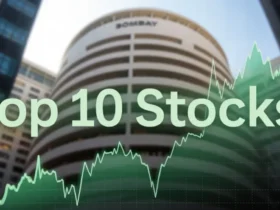



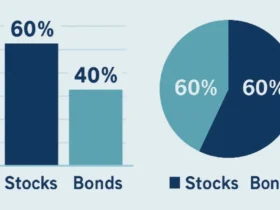
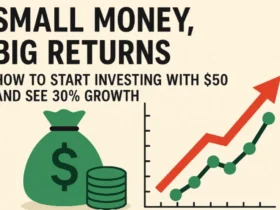














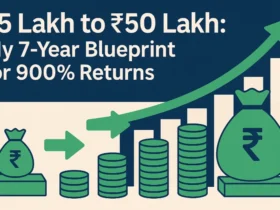

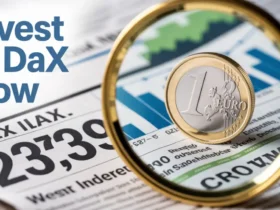
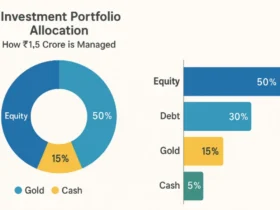
Leave a Reply